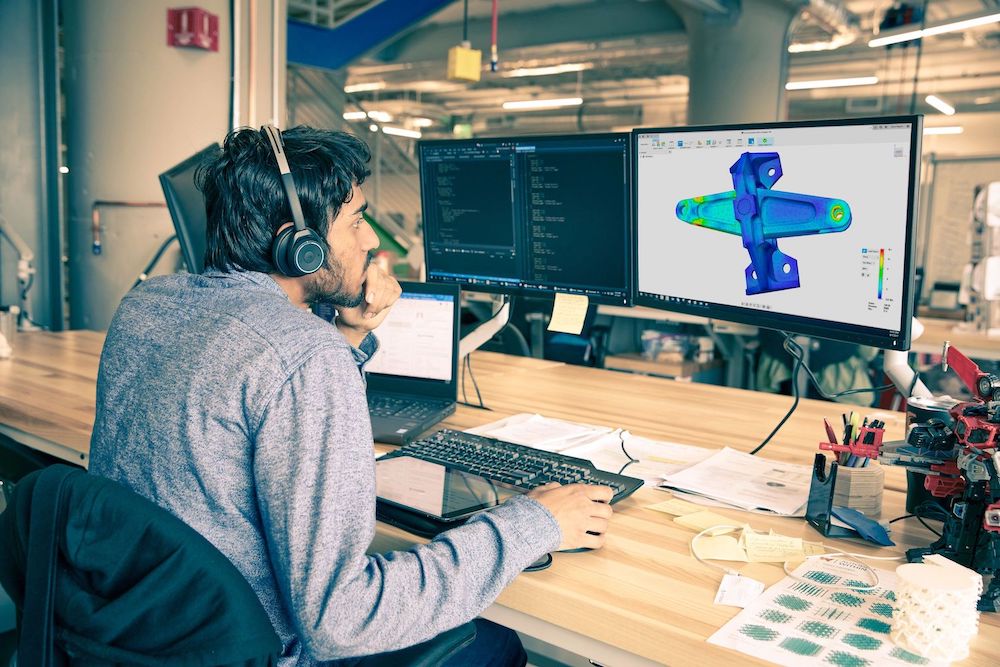Simulation Across Industries: AU Learning for Design Validation

There is the physical world and the digital world. They’re not the same, but they inform each other—and the lines between them are blurring. In architecture and manufacturing, we first create digital models to make real buildings and products. And data from physical buildings and products can inform digital models, which in turn will inform the design of future buildings and products.
On the border between these two worlds lies simulation. Simulation uses data and algorithms to replicate processes in the real world, from the behavior of gases and fluids to the response of structures to stress and heat. With simulation you can iterate faster, reduce development costs, and speed time-to-market for products.
In addition, simulation is also integral to more complex technologies. In generative design, simulation and analysis allow you to validate the solutions and refine your parameters to get an optimal design. With digital twins, where real-time data from sensors and systems can be used to simulate future performance and efficiency, you can make better informed decisions to improve outcomes.
Anything that happens in the real world can, in theory, be simulated—if you have the right algorithms and the compute power to make it happen. And with nearly infinite compute power available in the cloud, simulation is now something that’s available to every designer and engineer with an internet connection.
Ready to expand your knowledge of simulation? Check out this related content:
Simulation in industrial design and manufacturing
Instead of the expensive and time-consuming process of fabricating prototypes, we can simulate real-world performance using processes like finite element analysis and discrete element modeling.
- Fusion 360 has multiple kinds of simulation available. Get up to speed with what’s possible and learn how to set up a simulation in Fusion 360 with Elizabeth Bishop.
- Design and validation tools help engineers and designers collaborate more effectively. From static stress to generative design, this class will show you how to apply simulation tools to your design process and delight engineers with a sound concept.
- When it comes to plastic injection molding, proper venting is critical. Explore Moldflow simulations that enable you to predict and prevent problems.
- While we’re talking about Moldflow, have you taken advantage of the improved capabilities in the injection molding simulations? Franco Costa walks you through what’s new, like better warp prediction accuracy and more complex model geometry analysis.
- Ansys engineers Carlos Gomez and Tyler Ferris are here to help you understand your printed circuit board (PCB) reliability early in the design phase.
Simulation in architecture, engineering, and construction
Whether it’s finding the ideal configuration of your structure’s geometry, checking air flow patterns in a building, or using a digital twin to predict future operational behavior, simulation has a lot to offer the AEC industry.
- Complex building geometry can make it a challenge to design large spaces that are comfortable for people. But if you understand computational fluid dynamics, you can simulate and validate proper thermal comfort levels.
- Did you know you can simulate carbon emissions? Check out two new web-based solutions for simulating C02 impact and do more with your BIM data.
- Discover how you can leverage generative design to increase insight and optimize your road designs with Dynamo, InfraWorks, and Civil 3D.
- Digital twins are your bridge between the physical and virtual worlds. Learn how three separate companies came to utilize digital twins, how Forge helped them power their process, and how you can get started creating your own.
You can find dozens of simulation classes at Autodesk University anytime.




